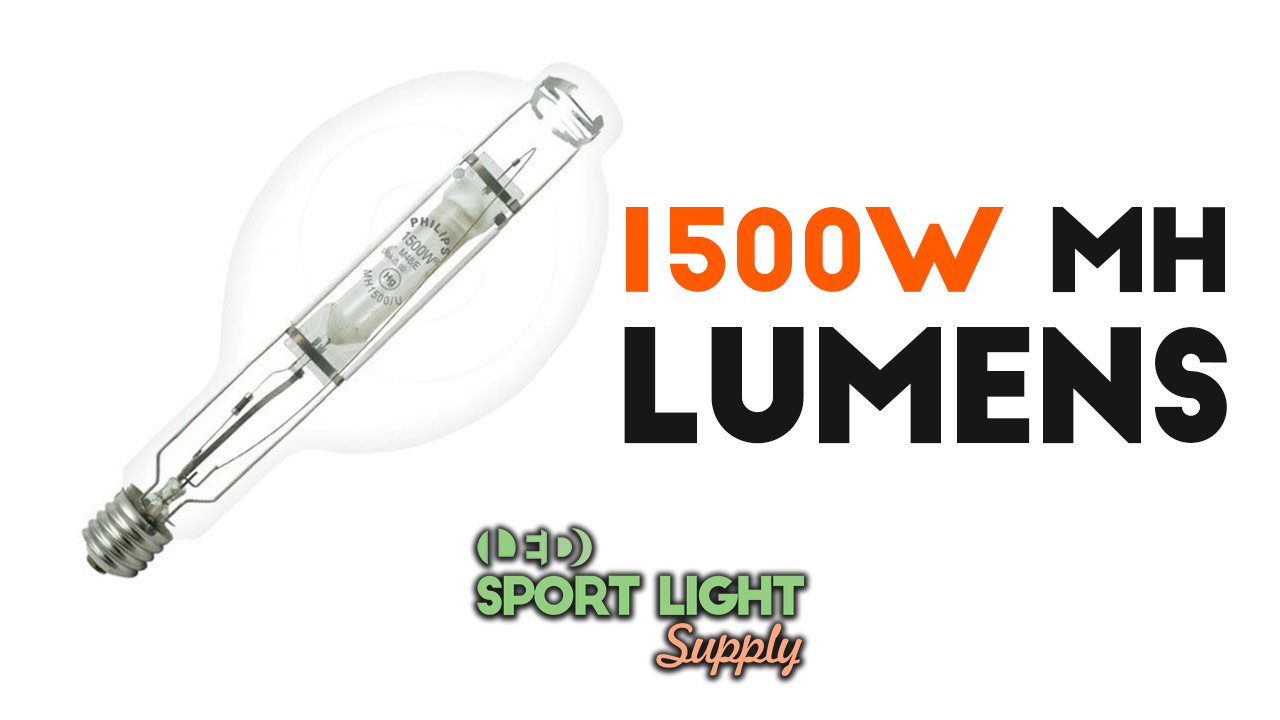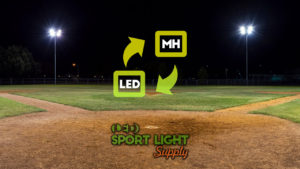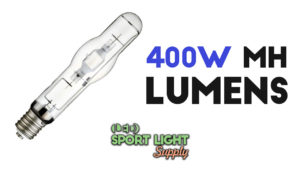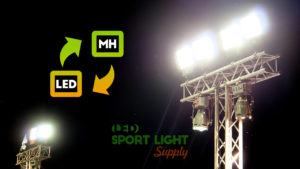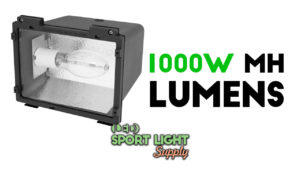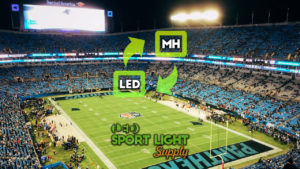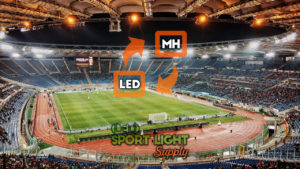What is the lumen?
First off, the lumen amount is the most useful number you need to replace an exhausted light source. You can either find a single replacement or more artificial lights. If you have a 1500 watt metal halide lamp, you need to use lumens to find out the equivalent LED lamp. Only then you can convert the old HID to LED.
Lumen is the unit of measurement par excellence for brightness. In detail, it applies to spherical illumination and light intensity. Simply put, the lumen measures the total amount of light emitted by our light source.
Often, the lumen score is associated with the luminous efficiency of all types of light bulbs. The higher this figure, the brighter the lamp. Also, you can use the lumen per watt ratio to find the most efficient bulb. The latter is the division of the lumen output by the absorbed watts. The most efficient the LED bulb, the less it will cost you in terms of electricity consumption.
How many lumens is a 1500 watt metal halide?
The luminous efficacy of the typical MH bulb ranges between 65 to 80 lm/W. Depending on the manufacturer, the number can be even lower. In fact, you can find many 400W metal halide lamps that produce only 20,500 lm. This means that the lumen per watt ratio is 51 lm/W.
Some commercial 1500 HID bulbs have a lumen per watt ratio of just 22 lm/watt. So, on the market, you can find wildly different products. Here is an oversimplified way to divide the current 1500 MH models on sale:
- Poor performances. Up to 33,000 lumens, which means a 22 lm/watt.
- Standard model. Anything between the worse and superior MH models.
- Superior metal halide bulbs. Starting from 124,000 lumens (82 lm/W)
As you are going to read, several factors influence the metal halide bulb’s performance.
What determines 1500W MH lumens?
1. 1500 watt metal halide structure affects lumen output
Each manufacturer follows the standard metal halide light structure. But at the same time, the finished product may appear different for several reasons. Usually, the metal halide light structure includes:
- a frame inside the bulb glass
- the UV-filtering borosilicate glass
- the main electrode
- Mercury and metal halide vapors
- a starting electrode
- the fly wire
- a stem
- the screw cap with foot contact.
Some lighting products offer a different structure. For example, a metal halide projector can be made of:
- the metal halide arc lamp connected to an anode cable
- quartz and a molybdenum foil (in detail, a molybdenum rod linked to a molybdenum foil that goes into the electrode rod)
- tungsten electrode doped with thorium
- a thermal filter
Different materials mean varying quality. Of course, the price point does not always reflect the quality of the materials. So, you should look at the specs data for the technical detail of each MH bulb.
2. Operating time (lumen depreciation)
A 1500W MH lumen output decreases exponentially against operating time. In a chart, with the initial lumens on the y-axis and the operating hours on the other, the MH curve dips quite abruptly. Especially after the 10,000 hours mark. By contrast, a more efficient light source such as LED generates a straight line.
Lumen maintenance is a term often used to refer to lumen depreciation. Mainly because you can find the lumen maintenance factor in some technical sheets. The higher the lumen maintenance factor, the better the longevity of the light source.
Just like many other HID lamps, an MH bulb decreases its lumen output by 30% after 5,000 hours. After 10,000 hours, the MH light halves its efficiency. Instead, LED lights need at least 50,000 hours to drop at 70% of their initial lumens.
3. Ambient temperature
HID bulbs are susceptible to sudden changes in temperature and high heat. For one thing, these lamps incorporate quartz technology. They work thanks to a discharge tube (arc lamp) made of clear quartz glass.
Quartz glass is resistant to high temperatures and capable of withstanding temperature changes. But often, when the projector is used in a dusty or smoky environment, its filters become dusty. Consequently, the lamp does not cool down enough. The high ambient temperature just makes things worse.
If you do not detect the overheated lamp in time and turn it off to let it cool down, the overheated lamp will explode. In the meantime, the lumen output will decrease as the internal pressure builds up, requesting a higher voltage supply.
4. Dirt on the 1500 watt metal halide lights
Most HID floodlights are placed on high masts or frames. So, they can be exposed to the elements, sand, acid rain, and smog. Of course, whenever the protective glass becomes dirty, the MH lumen output decreases.
Dirty fixtures can make it harder to convert to an equivalent LED light. Plus, encrusted dirt can hosts harmful bacteria and pathogens. So, you should regularly clean your lamp. Even if you do not need to replace the HID lamps.
MH floodlighting can attract birds. In detail, pigeons, doves, and crows love to perch above or near a heating source such as metal halide fixtures. But it goes without saying that their droppings can soil the whole lighting apparatus.
5. Less than optimum running conditions
Sometimes, the bulb shows manufacturing defects. But that is not always the case. In fact, during operation, dark spots can appear in the discharge tube or bulb glass. Mainly because the user is operating the lamp under less than optimal conditions.
Here are some common reasons that could explain a varying lumen output:
- continuous or too frequent lamp usage
- vibrations or oscillating the lamp during operation or in a hot state
- the low ambient temperature when starting the projector
- repeated switching on and off the MH light
- insufficient time for the lamp to cool down after turning off the light fixture
- incompatible ballast operating conditions (overwattage, overvoltage, overlamping, etc.)
- partial internal discharge that causes a dim glow
What is the LED equivalent of a 1500 watt metal halide?
If you search for high-quality LED lights, you can expect to find an equivalent light between the 300 and 1,000 watt range. Of course, you need to convert the old metal halide bulb to a compatible LED retrofit or wire your LED light from scratch.
You cannot replace the old MH bulb because of the ballast and starter connected to the lamp holder. Before you can put the equivalent LED light in place, you need to remove the old wiring system.
Usually, LED retrofits have a driver, so each model can provide different power consumption. Most LED lights offer a minimum lumen per watt ratio of 130 lm/watt. That is why the range I gave you is so broad.
As long as you keep calculating and using the lumens per watt method, you can always replace the 1500W metal halide light with more LED lights.
For the best results, take into account the individual lumens of each light source first. Then, get the equivalent lights and install them at the same MH lamp’s height. Otherwise, you might end up with a different lux reading. That is, distinct light distribution conditions that would not give you the same outcome.

